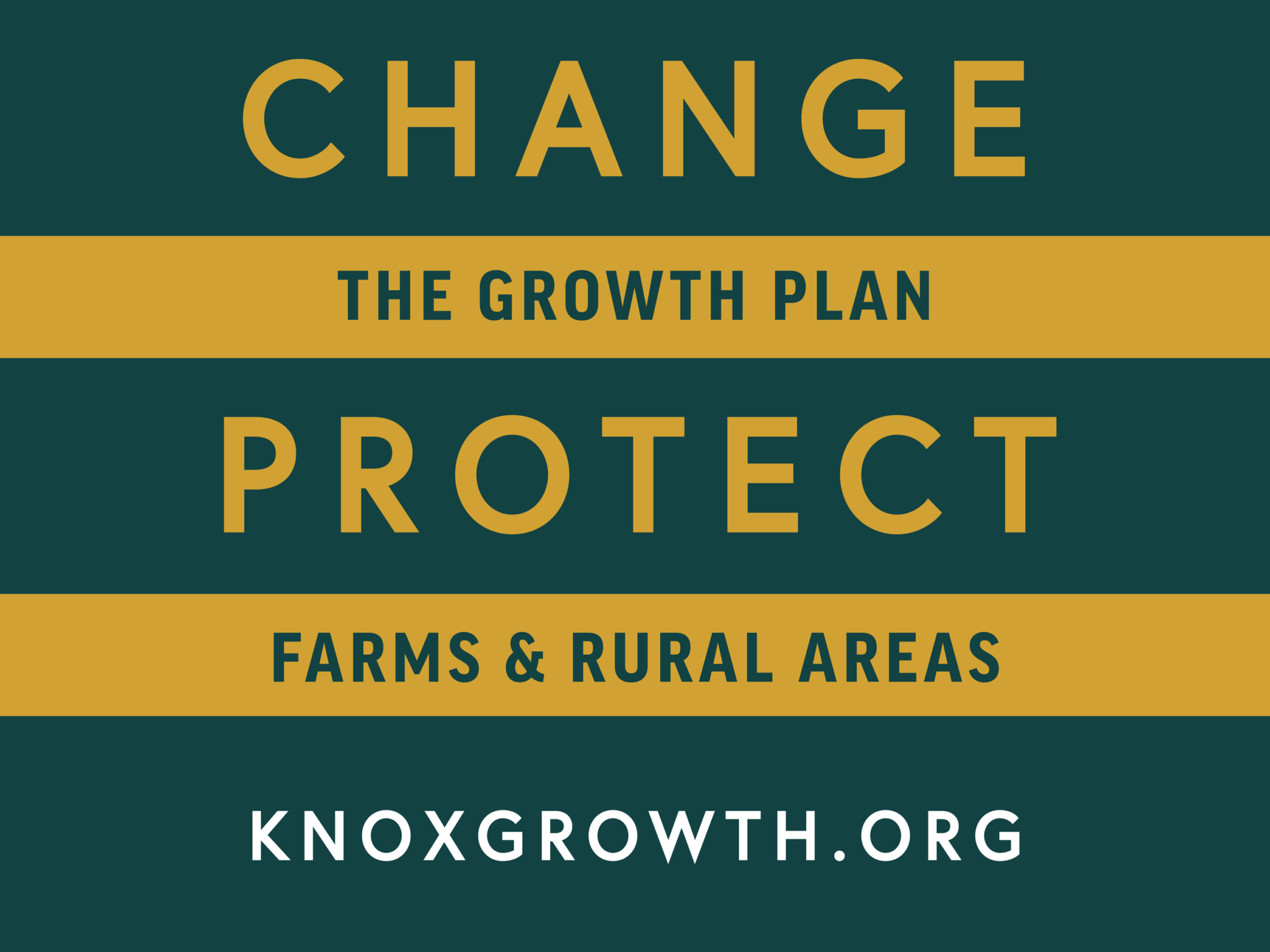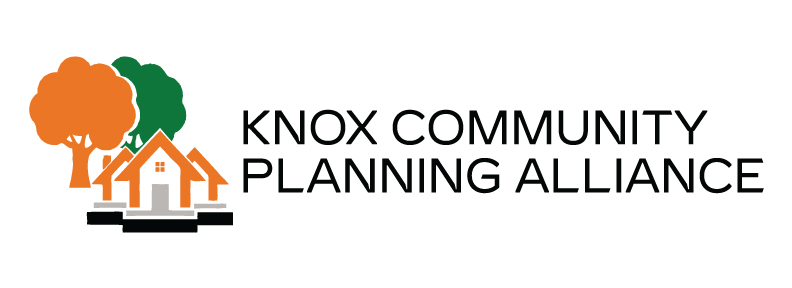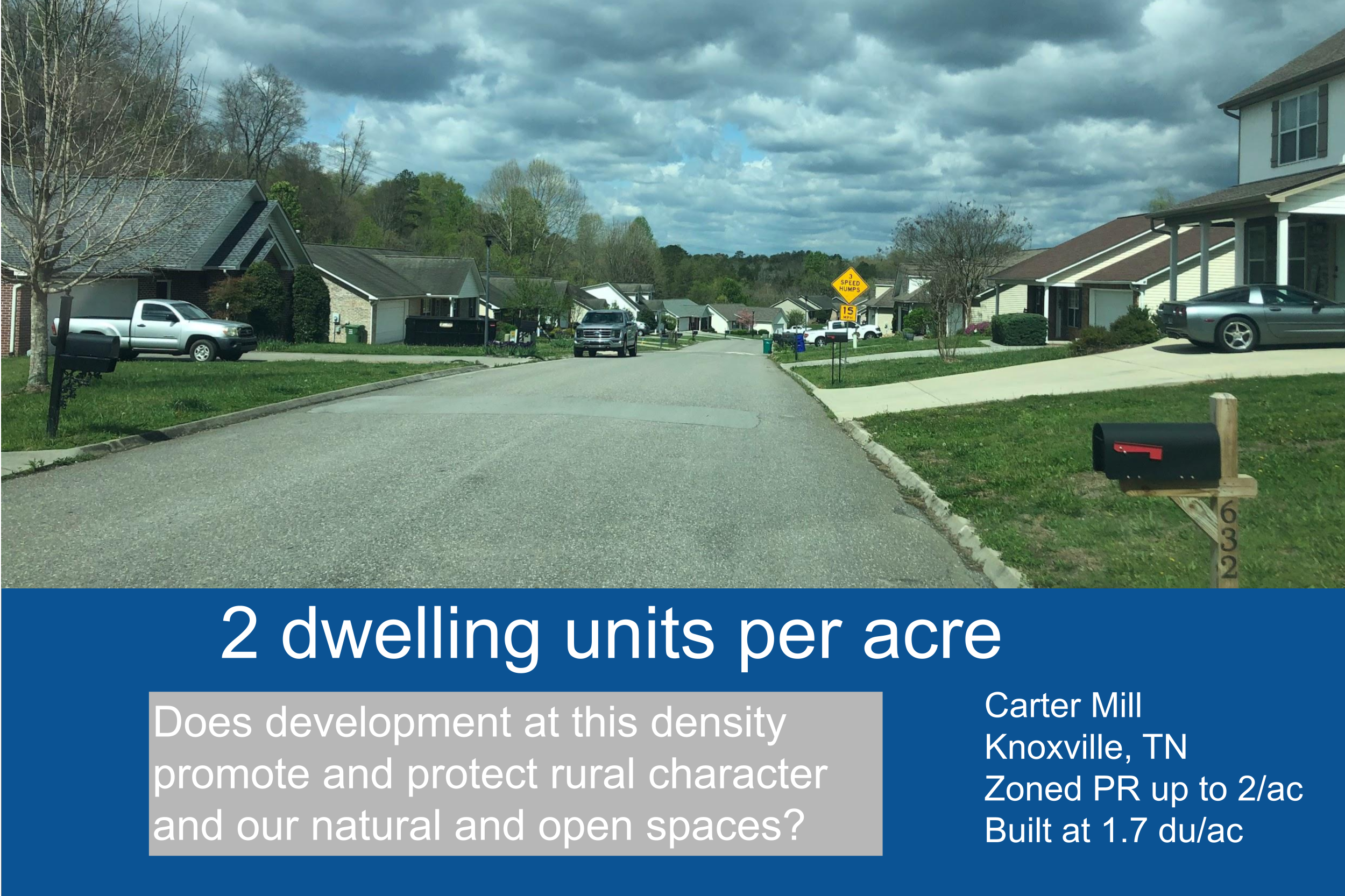A joint position from the Knox County Planning Alliance and the core team of Advocates for Balanced Growth
The Advance Knox process has had substantial public involvement, and we are grateful for the hard work of professional staff, the consultants, our elected officials, and the thousands of residents who participated in the public input.
We support planning that balances our growing population with the natural beauty and agrarian traditions of our county. New and infill growth should be well planned, attractive, and include developments with a variety of housing options, retail and restaurants, schools, parks, and other amenities for the growing population.
Our belief is this is best accomplished by focusing growth near existing infrastructure. If growth is needed away from existing infrastructure and services, then near-term funding must be identified for expanded infrastructure and services. We desire a combination of infill and more compact development along existing major corridors, and some modest development in the Planned Growth Area.
We support the Advance Knox process and are hopeful that, with some final improvements, the new Comprehensive Land Use Plan and the following Unified Development Ordinance will set a direction for our county’s future that all of us, and our descendants, will be proud of.
We ask for the following changes to be made to the Comprehensive Land Use and Transportation Plan
1. Strong Protections for Rural Character and Natural Beauty
Farms, natural areas, and the urban proximity to these spaces are an important part of this region and why so many people have chosen to live, work, and raise our families in Knox County.
We do not support subdivisions sprawling out and onto our farmland. These cost us our rural landscape, they de-value or destroy agricultural assets and the livelihoods and traditions of farmers. Advance Knox’s fiscal analysis demonstrates that low density suburban residential is a net-loss for county taxpayers.
Farmland loss is at a critical point. According to UT Institute of Ag, Tennessee is losing nearly 90,000 acres of land per year of agriculture and forestry land. That is equivalent to losing about 2 counties every 5 years. The rate of loss for 2018-2022 accelerated – nearly doubling – from the rate of loss of the prior 20 years (1997-2017).
Two (2) units per acre (the upper limit in the Growth Plan and allowed for consideration in the Comprehensive Plan – Appendix H) isn’t ‘rural’ to most people. We find it inside the city of Knoxville – Holston Hills, Alice Bell, and Sequoyah Hills are all built out at approximately 2 du/ac. Development will not flow away from 2 du/ac – it will continue to flow towards the Rural Area. At February’s Planning Commission meeting, an applicant told them that they could make 2 units work for a subdivision proposal in the Rural Area in Corryton. Two units per acre is just even lower density sprawl; if allowed we will see numerous requests for that over the next 20 years.
To that end, we ask for the Rural Place Types to support lower densities than the 2 units per acre. Other Tennessee counties, such as Williamson, have adopted rural protection zones of 1 unit per 2 acres, or 1 unit per five acres. We believe setting a limit of 1 unit per 2 acres is an excellent start, and represents the desires of most landowners in those place types. The lowered density will direct development away from the rural areas of the county. We also ask for design standards to be created that support connection of natural areas and wildlife corridors, and for environmentally sensitive areas to be identified, considered, and where possible, protected in the land use process.
2. Give the Plan Teeth
Our plan must have integrity. After 2+ years of public involvement and professional expertise, our plan is a good plan, and we must work the plan. It does not benefit the community at large if the plan is constantly amended on a monthly basis by individual plan amendments.
We ask that the criteria for amending the Comprehensive Land Use Plan be strengthened and that applicants must demonstrate that their proposals support the goals, policies, and objectives of the Plan. We also ask that the rezoning table, in Appendix H, be made mandatory (“shall”) so that our appointed and elected officials must give more weight to the Plan when considering rezoning. We also ask that small changes, like changing “should” to “shall”, be made where appropriate in the plan. Our current land use plans have excellent suggestions and guidelines preceded by “should”, but we have a 20+ year history of ignoring them or not implementing them.
3. Phase in the Northeast County Expansion
The Growth Plan adds nearly 5,000 acres of Planned Growth Area in northeast Knox County. This area is predominantly rural in character today. Before this area is opened up for suburban residential development, we ask that the Mobility Study / Small Area Plan be completed for the affected area. Also, the new Unified Development Ordinance (“UDO”) should be in place prior to new subdivision development. The UDO is expected to have design standards that address rural character and guide the growth.


